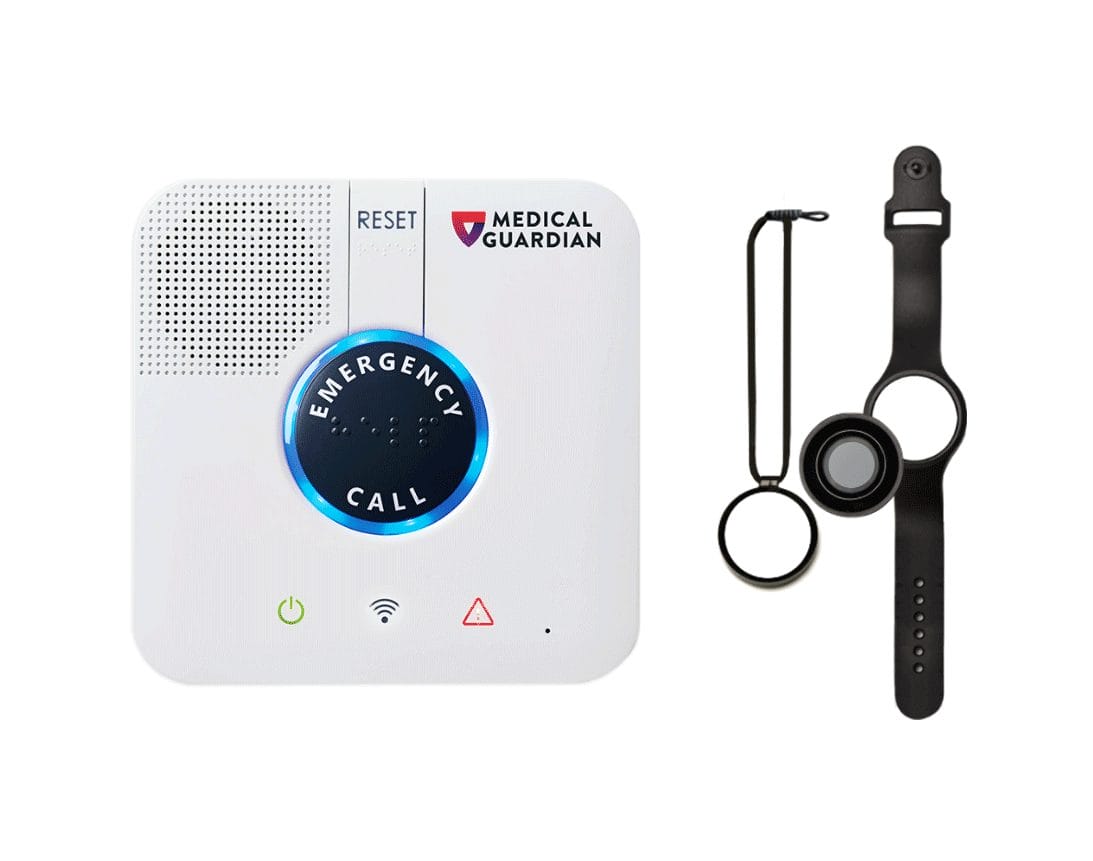
Medicare, the federal health insurance program for adults 65 and over and some younger adults, can help individuals maintain their health and access necessary medical services. Knowing how and when to sign up, understanding late penalties, and deciding which plan to choose can be very confusing. We will review the basics so that you make a prudent decision and know how to apply for Medicare with ease.
What is Medicare?
Medicare is a federal insurance program that covers a wide range of in- and outpatient medical services, medical supplies, preventative care, and prescription services.
Medicare Part A is hospital insurance. It covers inpatient hospitalization, short-term stays in skilled nursing facilities, some aspects of home health care for a limited time, and hospice care. Medicare Part B is medical insurance, which covers medically necessary and preventative services as well as durable medical equipment. Medicare Part D is prescription drug coverage. Some people opt for a Medicare Advantage (Medicare Part C) plan, which is an alternative to original Medicare. We discuss Medicare Advantage in further detail below.
Although Medicare has robust coverage for most health-related concerns, it doesn’t cover everything. You may have out-of-pocket costs depending on your plan.
How does Medicare help older adult beneficiaries?
Many people retire in their 60s and 70s and lose employer-sponsored health plans or, if self-employed, their private insurance plans. Without Medicare, many would be without health coverage. Here is how Medicare helps older adults:
- • Health care coverage: The health care services Medicare covers assist older adults in accessing the medical care they need to stay healthy, manage chronic medical conditions, and address medical events.
- • Financial protection: Medicare helps protect people from the high cost of health care by limiting out-of-pocket expenses. Beneficiaries are responsible for copays and deductibles, but Medicare covers a significant portion of health care costs.
- • Preventative care: Medicare covers a wide range of preventative services, such as vaccinations, wellness examinations, and health screenings at little or no cost.
- • Prescription drug coverage: Medicare Part D offers prescription drug coverage to help manage the cost of medications.
Who is eligible for Medicare?
People qualify for Medicare at age 65 whether they have worked or not. Younger individuals with a disability, end-stage renal disease (permanent kidney failure requiring dialysis or a transplant), or ALS (also called Lou Gehrig’s disease) are also eligible.
When to apply for Medicare
Knowing when to sign up for Medicare is important. Signing up during the required period is essential to avoid gaps in coverage and late enrollment penalties. However, if you are covered through an employer group plan, you may decide to sign up for Medicare later or delay signing up for Part B. Here are the three enrollment periods:
Applying for Medicare when you turn 65
Medicare’s initial enrollment period is a seven-month window that begins three months before your 65th birthday and ends three months after your birthday month. If you already receive Social Security benefits, you will automatically be enrolled in Medicare Parts A and B when you turn 65. If you are not receiving Social Security benefits, you must sign up for Medicare online or by phone during this period.
Applying for Medicare after you turn 65 but have been covered by an employer health plan
Under this circumstance, you can sign up during a special enrollment period without penalties. If you have been covered by employer-sponsored health insurance:
- • You can sign up for Medicare anytime and still be covered by your employee health plan.
- • You can sign up for Medicare within eight months of the day you or your spouse stop working.
- • You can sign up for Medicare if you have a group plan within eight months of that plan ending even while you continue to work.
Note that additional situations, such as losing Medicaid coverage or being impacted by a natural disaster, may trigger a special enrollment period.
Applying for Medicare when you miss the other periods
If you miss your initial or special enrollment period, you can apply for Medicare during the general enrollment period, which runs from January 1 to March 31. You may incur a lifelong penalty when you sign up during general enrollment.
If you or a spouse worked long enough (generally 10 years), you’ve paid enough in Medicare taxes and therefore qualify for premium-free Medicare Part A. In this case, you will not incur a penalty for late enrollment. However, if you don’t have enough work credits to qualify for premium-free Medicare Part A, you will have to pay a monthly premium, and the penalty for late enrollment is 10% of that premium. You pay that penalty for twice the number of years that you could have paid Part A premiums but didn’t.
For Medicare Part B, you pay an extra 10% for each year you could have signed up for Part B but didn’t. This penalty lasts for as long as you have Part B coverage. You may also have a higher premium, depending on your income.
For Medicare Part D, you’ll pay a late enrollment penalty if you go more than 63 days without a prescription drug plan that is similar to Medicare Part D. The late enrollment penalty is 1% of the national base beneficiary premium for each month that you went without coverage.
What decisions do I need to make when signing up for Medicare?
The biggest decision Medicare beneficiaries must make when signing up for Medicare is choosing between original Medicare and a Medicare Advantage (Medicare Part C) plan. Let’s look at the general differences between the two.
Original Medicare
Original Medicare is a fee-for-service program. Under original Medicare, you have Part A and Part B and will have to pay for some services as you get them. Medicare also requires that you sign up for a prescription drug plan (Part D). The Part D plan also has a monthly premium. Most people also sign up for a Medigap plan through a Medicare-authorized insurance company. Medigap plans are supplemental insurance that will pay for some health care costs that Medicare does not cover. They have monthly premiums that typically go up each year.
Original Medicare covers any Medicare-contracted physician, skilled nursing facility, home health care agency, or hospital in the country.
Medicare Advantage (Medicare Part C)
Medicare Advantage plans remain attractive to older adults due to their no- or low-cost premiums. Private insurance companies offer Medicare Advantage plans and provide all your Medicare coverage, including Parts A and B coverage and a prescription drug plan. Many Medicare Advantage plans also offer services that original Medicare does not, such as hearing aids, dental care, eyeglasses, and more.
The potential downside of Medicare Advantage plans is that you must go to an approved network of providers, which can limit your choices. You cannot go to any Medicare-contracted health care service in the country and are likely limited to your primary geographical location. You may also have copays and need referrals to see specialists.
How to apply for original Medicare
If you’re 65 or older, you can enroll in Parts A and B or Part A only. You can delay Part B enrollment if you’re already covered through an employer group health plan. To apply for Medicare, you’ll need to supply your Social Security number, your place of birth, and your current health insurance information. If you’re applying for Part B only, you’ll also need a valid email address and your Medicare number.
Online sign-up for Medicare
Most people don’t know that you sign up for Medicare on the Social Security Administration site. You’ll need to create or log in to your existing My Social Security account to begin the application process.
Sign up for Medicare by phone
Call 1-800-772-1213 and tell the representative you want to sign up for Medicare Parts A and B or Part A only. TTY users should call 1-800-325-0778.
Sign up for Medicare in person
If you’d prefer to apply for Medicare in person, you can contact your local Social Security Administration office, which you can find here.
How to apply for Medicare Advantage (Medicare Part C)
To apply for a Medicare Advantage plan, you must first have Medicare Parts A and B. After enrolling in Medicare Parts A and B, you can call 1-800-MEDICARE to learn about different Medicare Advantage plans, explore plans online, call the Medicare Advantage plan provider directly, or use an insurance broker. Take time to review all Medicare Advantage plans in your area so you can make an informed choice.
Once you have signed up for a Medicare Advantage plan, you can make changes during the Medicare open enrollment period from October 15 to December 7. However, if you decide you want to switch back to original Medicare, you may not be able to get a Medigap plan, or you may have to pay very high premiums.
Final thoughts
Almost everyone is anxious about signing up for Medicare. The choices are complex and confusing. Informing yourself about your options — including scope of coverage, networks, deductibles, and premiums — can give you confidence that you have picked the best Medicare plan for your situation. With the information supplied above in addition to your own research, you can know how to apply for Medicare and start the process with peace of mind.








